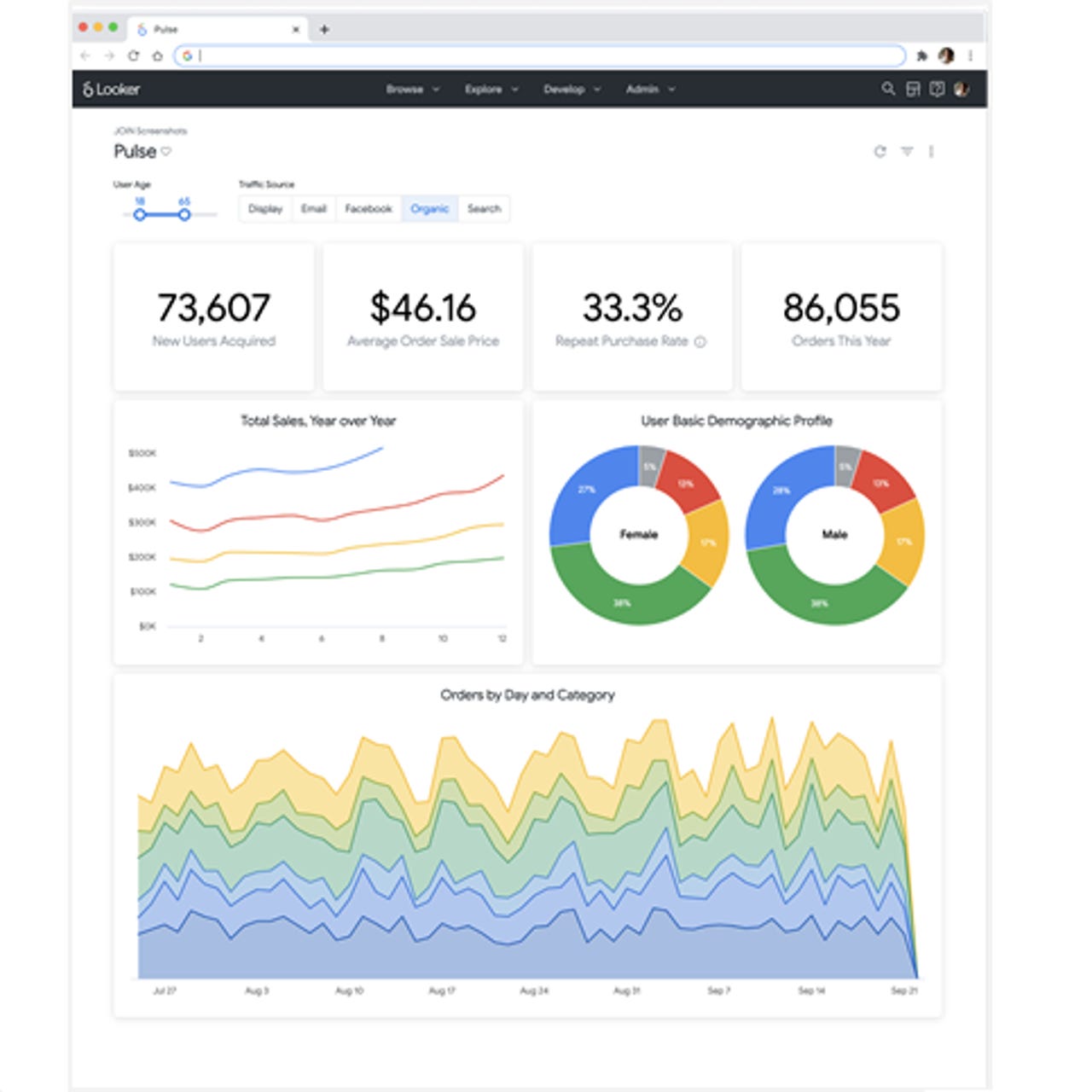Google boosts BI chops with new Looker features, roadmap


Looker has revamped its core dashboard capabilities
Modern business intelligence (BI) provider Looker, at its JOIN@Home online conference today, will announce important new features that bring it more to parity with longer-established self-service and enterprise BI platforms. Now that Looker is firmly on-boarded and an important part of Google Cloud, the time is right to shore up its enterprise BI credibility.
Must read:
- Looker gets Google integration capabilities in post-acquisition release
- Google closes Looker acquisition
Dashboards on the big screen, apps on the small one
First off, Looker has improved its dashboard facility, adding cross filtering capabilities. Cross-filtering allows users to click on particular data elements in one visualization in order to filter the data used by the other visualizations. It makes dashboards more interactive and better able to work as entry-level discovery interfaces, before users drill down to more sophisticated, dedicated analysis views. The figure at the top of this post shows a Looker dashboard created with the new authoring platform.
Next, Looker is introducing its first native mobile apps. While Looker's Web interface was fully responsive and mobile-friendly before, the mobile apps for iOS and Android will likely provide a more enticing, lower-friction interface for corporate BI users. Mobile BI apps are great for conveying key performance indicators (KPIs) and high-level data visualizations. Most of Looker's major competitors have had mobile apps for years, and so the time was right for Looker to get that capability out to its users.
Enabling developers
Looker is also beefing up its developer story, another critical pillar for a successful business intelligence platform. To begin with, Looker is adding to its previously announced Extension Framework, which allows application developers to create components that can be located within the Looker environment. Looker is publishing its own extension for entity relationship diagrams, which can be used to visualize data models.
For developers who want to bring the Looker experience into their own apps, the company is announcing the availability of its new public library of Looker UI components for both the React JavaScript framework and the Figma UI prototyping tool. This will help enable Looker as a platform for embedded UI scenarios.
More now, more later
There's a slew of other goodies coming from Looker as well. Aggregation awareness will allow the BI platform to speed queries by using pre-calculated aggregations, where they exist, instead of totaling everything from low-level fact data on each query. There's also enhanced Slack integration (including the ability to configure conditional alerts that render directly in specific Slack workspaces and channels); a new Explore picker; and a new report visualization.
The company will also announce significant detail about its roadmap for future releases. That roadmap includes a revamped core Explore interface; SQL-based automated model generation; new templated analysis experiences (created atop the Extension Framework); augmented analytics; and integrated workflows.
Looker's new dashboard capabilities are being released into general availability (GA). The native mobile apps and Extension Framework are available as open beta releases, with the mobile apps likely to GA by end of year and the Extension Framework estimated to hit GA by early 2021.
When it comes to sophisticated BI capabilities in the cloud, Salesforce has Tableau and Microsoft has Power BI. And over the last three weeks, significant new features were announced for both of those BI platforms. That puts the pressure on Google Cloud if it wants to become a serious contender. With Looker's new and planned capabilities being announced today, it seems Google is taking the challenge very seriously.
Also read: